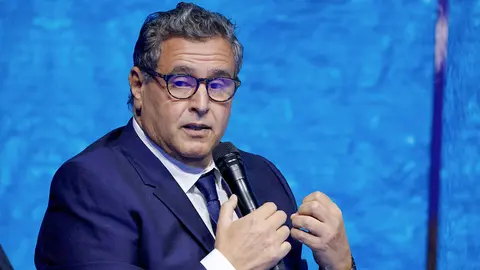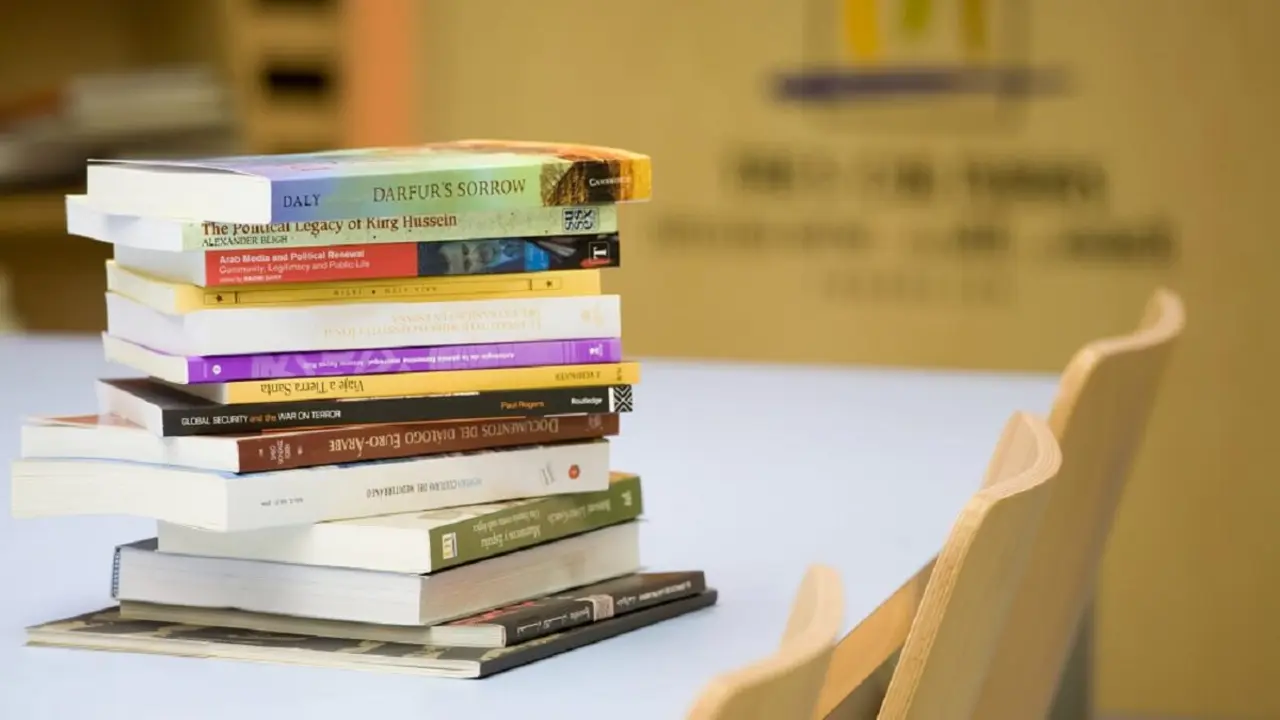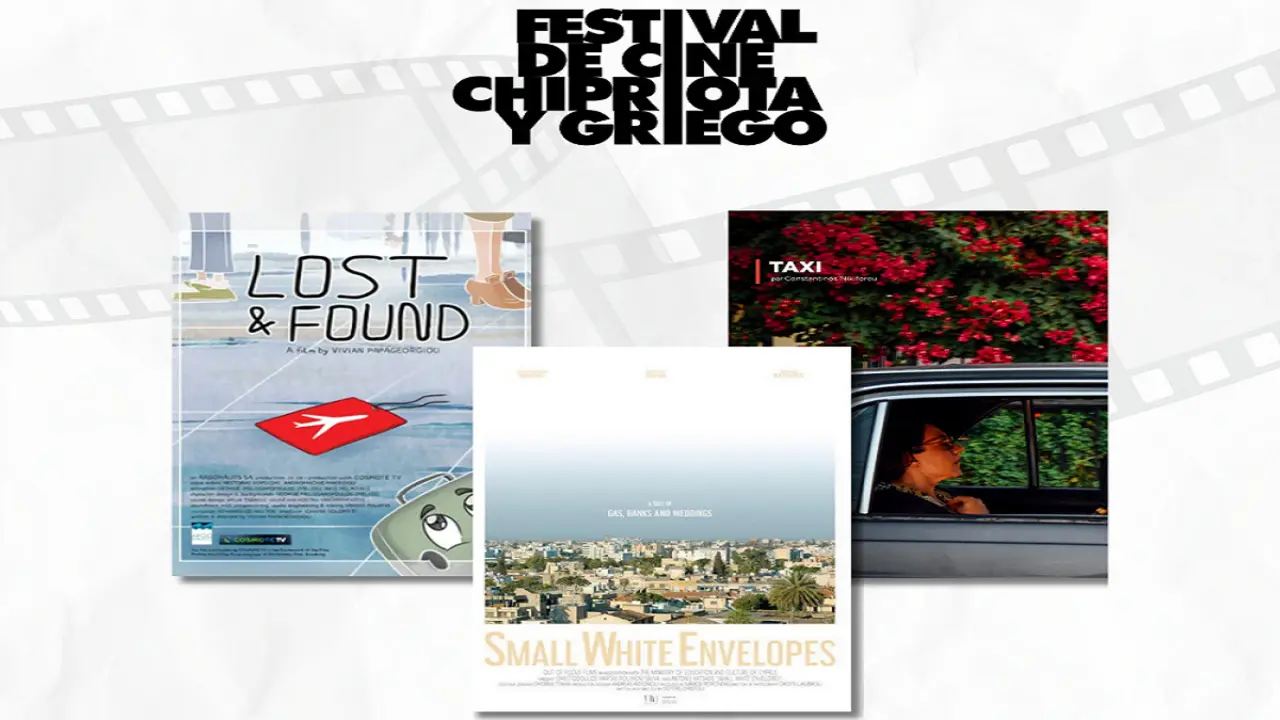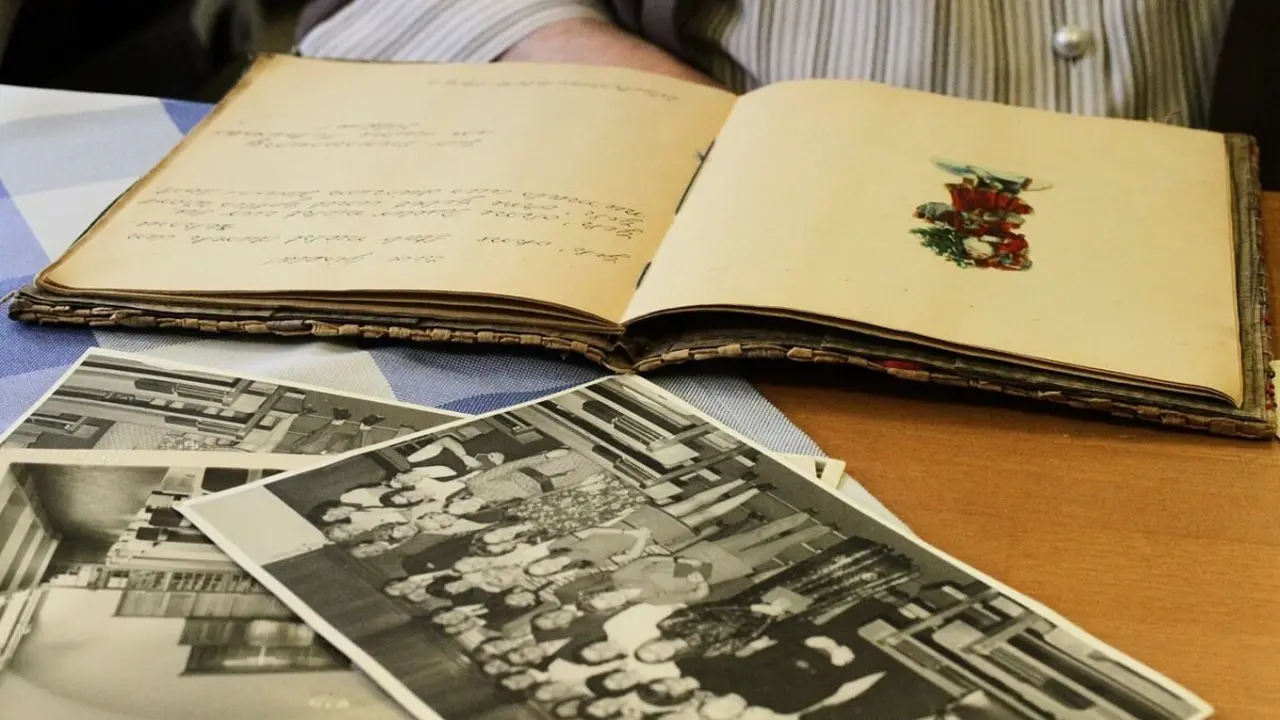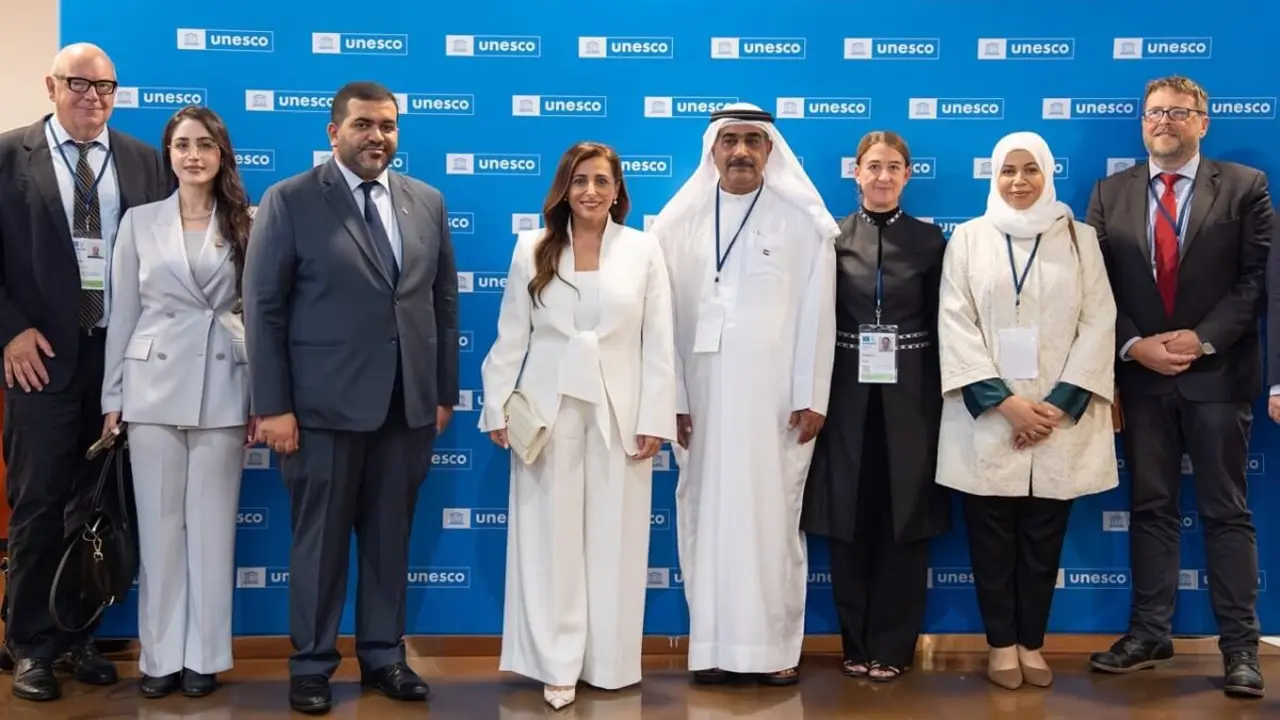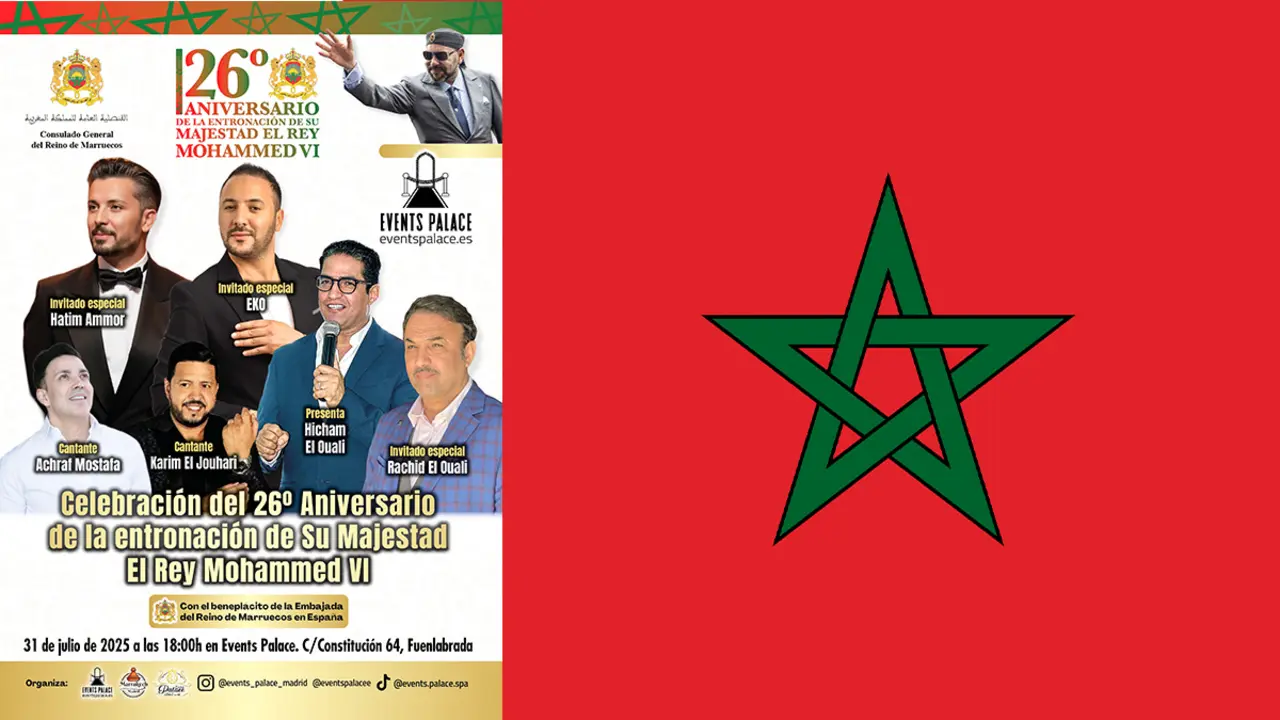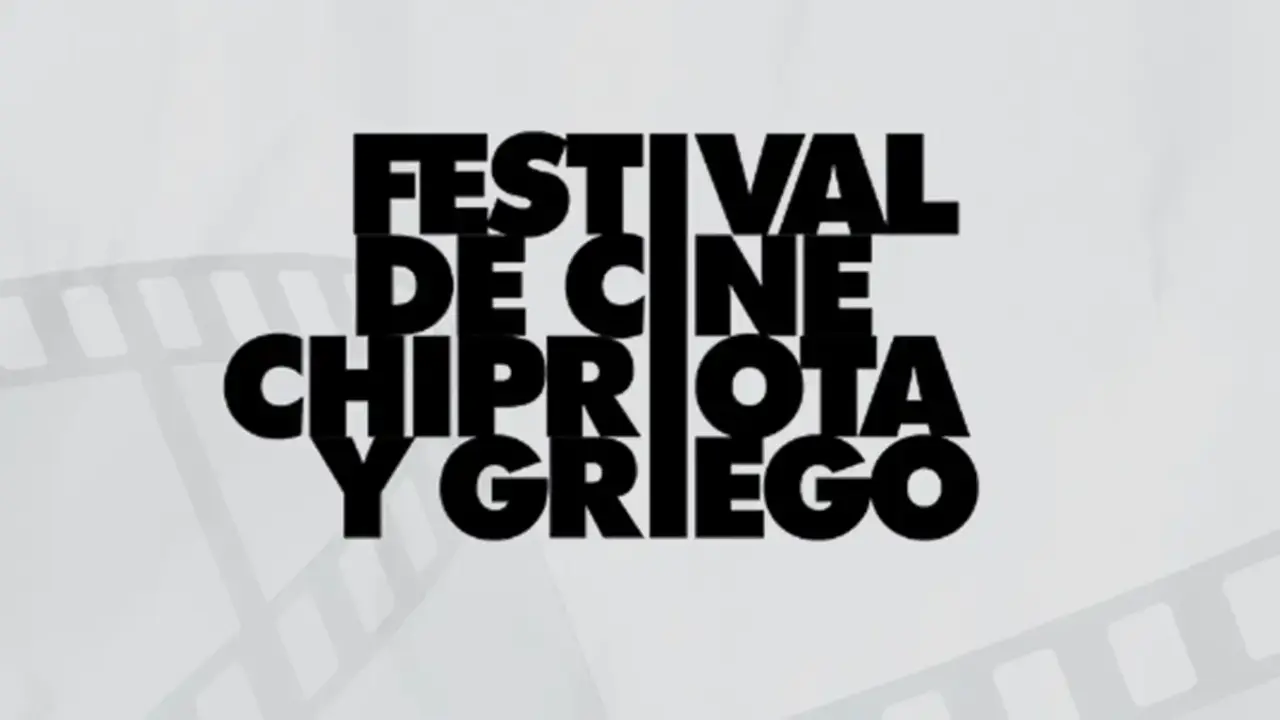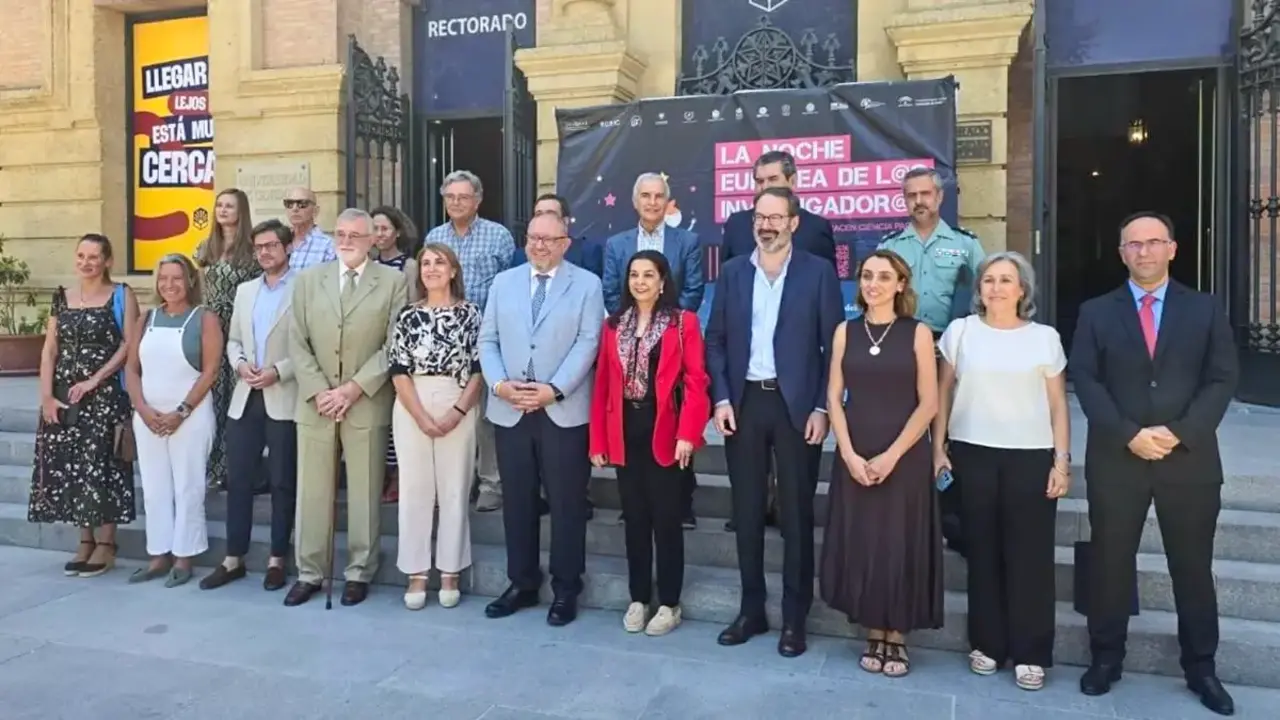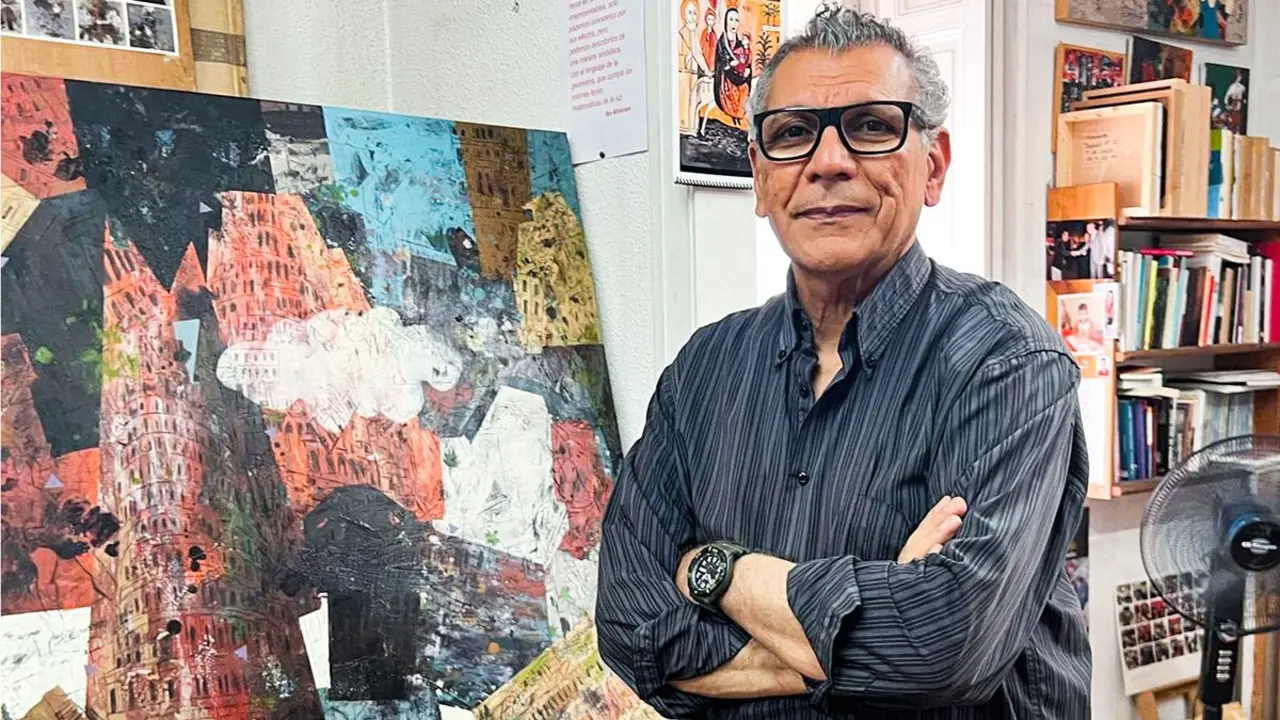The Cervantes Institute lays the symbolic “first stone” of its new headquarters in Casablanca
The center, with more than 2,300 square meters of floor space spread over two floors and a basement, will house a library, an auditorium, and a dozen classrooms. The Cervantes Institute in Casablanca ranks fifth in terms of hours per student among the Institute's network of centers
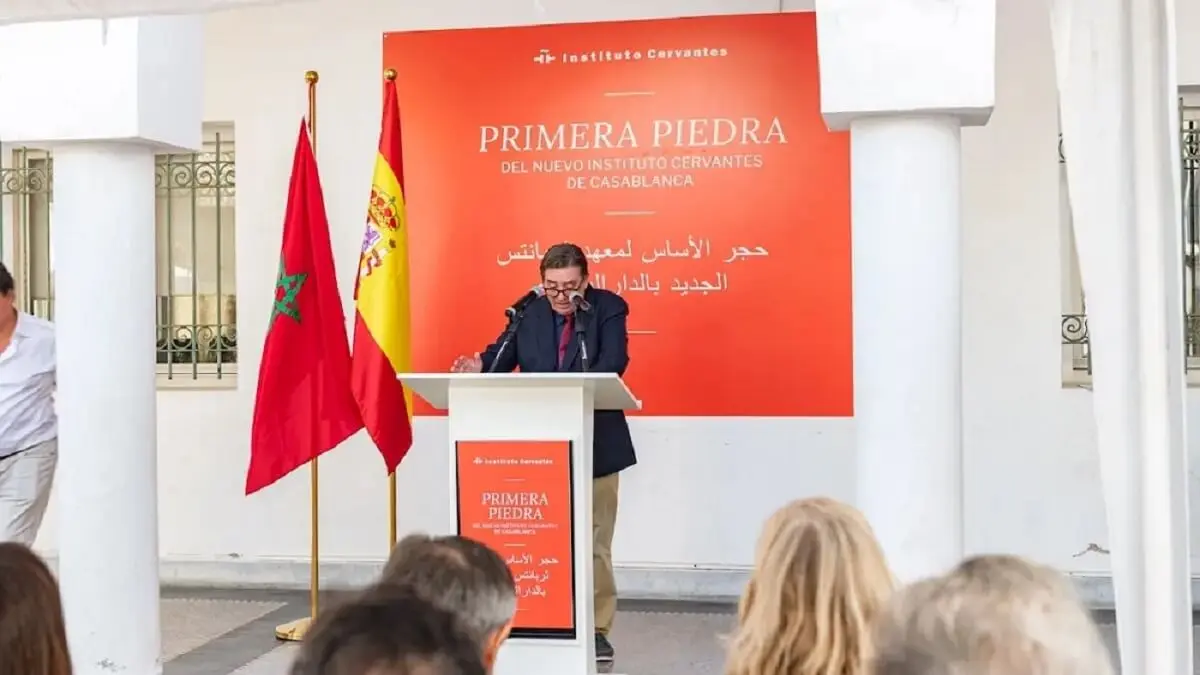
On Friday, July 4, the Cervantes Institute symbolically laid the “first stone” of the comprehensive renovation project for its headquarters in Casablanca, a historic building located on Alger Street that will be transformed into a center of reference for the promotion of Spanish language and culture in Morocco.
The ceremony was attended by Luis García Montero, director of the Cervantes Institute, and the Spanish ambassador to Morocco, Enrique Ojeda. The symbolic ceremony to lay the first stone included an urn containing representative items such as the official record of the event, coins, the day's newspapers, and the publications El quijote: Lecturas Marroquíes (Don Quixote: Moroccan Readings) and the Institute's 2024 yearbook, El español en el mundo (Spanish in the World).
The Cervantes Institute established its headquarters in Casablanca in the early 1990s on Alger Street, in a two-story building with a basement. With the new renovation, it will have more than 2,300 square meters of floor space, in addition to nearly 1,000 square meters of green areas, courtyards, and open spaces.
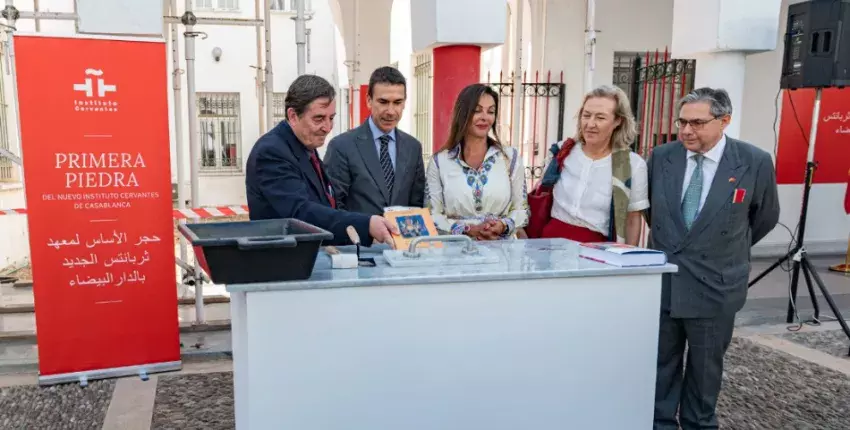
The renovation of the building, which was constructed in 1934 and had some areas in need of repair, was planned in 2024 and the building permit was granted a few months later, with a scheduled completion date of 2026.
While the work is being carried out, the institution has temporarily moved its offices to the Cervantes classroom building in the Moroccan city, located on Calle Curie, very close to the headquarters undergoing renovation on Calle Alger.
The director of the Cervantes Institute said that this “first stone” is “the result of past work that brings the institution's hopes for the future to the present.” For García Montero, the Institute has a “historic relationship” with Morocco that is “consolidated from the point of view of fraternity and collaboration” with this reopening.
“Starting the renovation of this center is ensuring the presence of Spanish in Morocco and opening up horizons for the future,” he said, after pointing out that the African country has the second highest number of Cervantes centers in the world, only surpassed by Brazil. He also reiterated the Institute's efforts to ensure that regular education in Moroccan public schools includes Spanish in their curricula.
For his part, the Spanish ambassador to Morocco, Enrique Ojeda, also highlighted the importance of the launch of this new headquarters as a “firm commitment” to the relationship between the two countries. “In this challenge, culture and the teaching of Spanish are fundamental,” he argued.
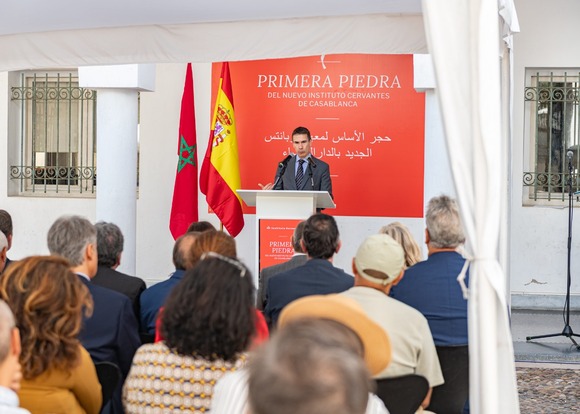
This renovation has been designed by architects Jesús Ulargui, who drew up the basic and execution plans on behalf of TRAGSA, in association with Omar Alaoui. The project aims to restore and revitalize an iconic building in the city, which represents “a valuable testimony to Spain's presence and cultural activity” in Casablanca, adapting it to the Cervantes Institute's current needs.
After the renovation, the new building will house administrative offices, a library, an auditorium, a dozen classrooms, staff rooms, and meeting and activity areas such as a courtyard, a literary café, and gardens, as well as rest areas for staff and the public.
Heritage restoration and new uses
The key elements of this renovation are based on heritage restoration, adaptation to new uses for the building, and a contribution to the urban space surrounding the building. On the one hand, the project will restore the building's original U-shaped design, removing additions that detract from the formal and constructive austerity so characteristic of this architecture.
Original elements such as white walls, wooden carpentry, doors, and windows that were modified or covered up will be restored, reconnecting the interior and exterior, a key principle of the original design.
In addition, the interior will be reorganized to accommodate the activities of the Cervantes Institute. The ground floor will include a library, an auditorium, a cafeteria, workshops, and offices, while the first floor will house classrooms and spaces for teachers.
The old doors leading to the courtyard and the Sacré-Cœur church will also be restored, opening the building to the outside and creating outdoor reading and relaxation areas.
Likewise, the central courtyard will be opened up to the urban scene, replacing the current opaque wall with a transparent fence, which will allow it to be used for cultural activities and events. In the same vein, the building will be opened up to the neighboring Arab League park, improving its connection with the urban environment.
The renovation of the building on Rue Alger is based on “reconnecting” the building with its memory, encompassing the uses, meanings, and events that have marked it over time. This building was promoted by the government of the Second Spanish Republic, with its first use as a school, known as the Tirso de Molina Spanish Cultural Mission.
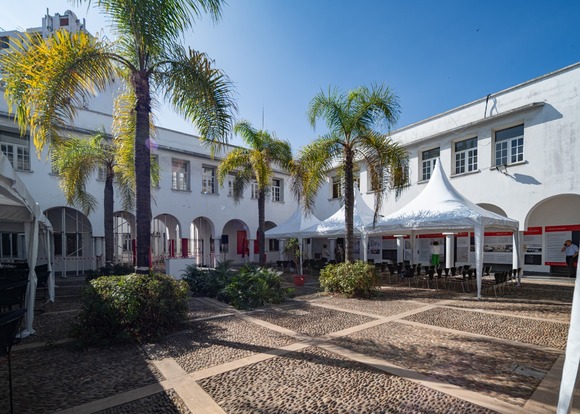
Teaching Spanish in Morocco
Morocco is one of the leading countries in terms of Spanish language teaching. The country has 12,774 native speakers and 1,741,711 with limited proficiency, making a total of 1,754,485 potential Spanish users, according to data collected in the Cervantes Institute's 2023-2024 report.
In terms of students, this African country has 43,261 students of Spanish in primary, secondary, and vocational education; 1,772 in university education, another 4,839 spread across other centers, and 12,386 students enrolled in Cervantes Institute and AVE centers (online courses), for a total of 62,258.
The Cervantes Institute in Casablanca ranks fifth in terms of hours per student in the Institute's network of centers, with almost 173,000 hours in the 2023-2024 academic year, showing a sustained increase over the last three years (in the most recent year, there was a 37% increase compared to the previous year).
In the 2023-2024 academic year, enrollment at the Casablanca center reached 5,258 students, while DELE candidates numbered 1,508.
In total, the academic area of this center in the most recent academic year has experienced a 20% increase in students interested in general courses, both in face-to-face and distance learning modalities.
Likewise, Spanish courses for children and teenagers have also increased by around 10%, while growth has also been reflected in the number of DELE candidates, which has grown by 24% compared to the previous year, with the opening of five new exam centers in Casablanca and its area of influence.

